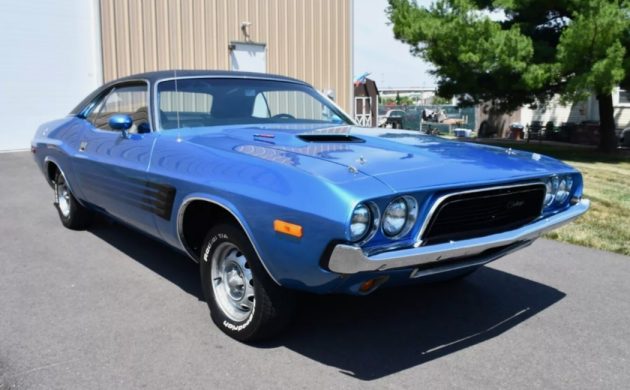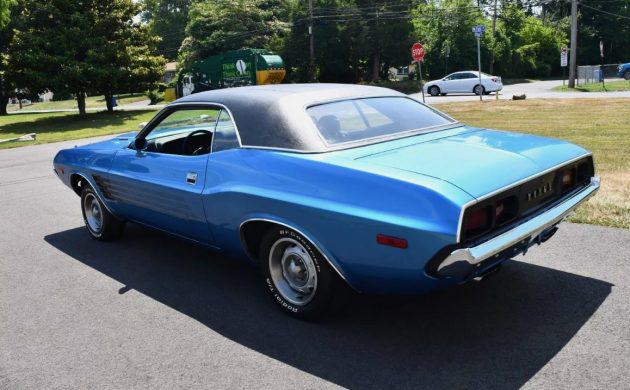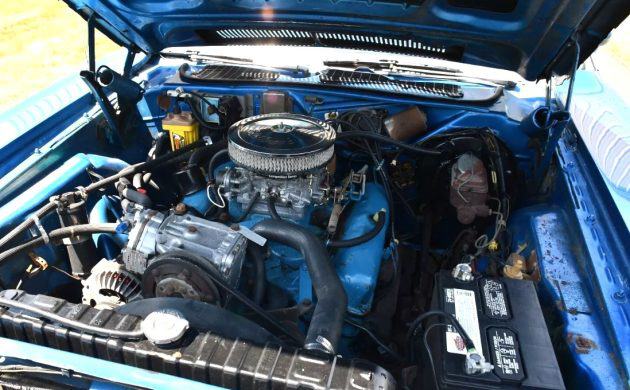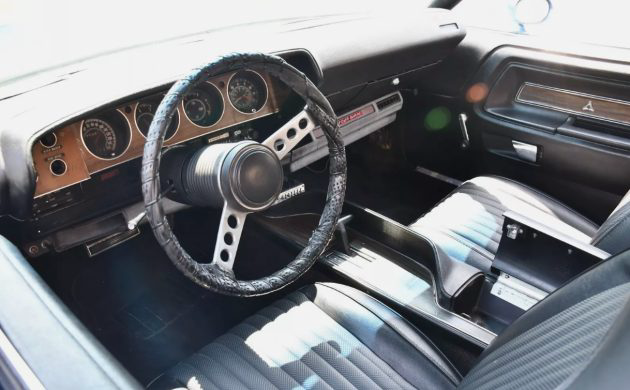I’ve always wondered why Dodge was the last major U.S. auto manufacturer to enter the “pony car” market. Especially since Dodge was positioned as the “performance” division at Chrysler. Perhaps they were plenty busy with the popular Dodge Charger in the late 1960s. It wasn’t until Chrysler gave the green light for a new E-body platform for the Plymouth Barracuda in 1970 that Dodge got on board with the Challenger. It was only around for five years (excluding the later Japanese captive import of the same name and the rebirth of the Challenger in the 21st Century).
Dodge’s timing wasn’t good as the muscle side of the market was beginning to fade when the Challenger debuted. So, its sales were the best in 1970 and declined after that through 1974. Big-block engines like the 383, 440, and 426 Hemi dominated in the first two years; after that, the 340 small-block was the performance choice in 1972 and 1973 (replaced by the 360 in 1974, the Challenger’s last outing).
This E5 Blue ’73 Challenger looks nicer in the photos than the seller says it is. Some dents and scratches don’t jump out at you in the pics. But the original interior looks quite good, especially for the Dodge’s reported 71,000 miles. The black vinyl top looks practically new. Under the hood resides a numbers-matching 340 with a 3-speed TorqueFlite automatic transmission. The seller says the car “runs and drives” but doesn’t say how well.
The Challenger has air conditioning, but it’s not factory. The compressor is aftermarket, and the vent network is under the dashboard, but not the clunky box you often saw in those days. All-in-all this Challenger looks like a solid investment, though the front end seems to sit higher in the air than it normally should. Have changes been made to the car’s suspension fore and aft? Located in Bristol, Pennsylvania, this Mopar is available here on eBay where the current bid is $23,100.






It’s refreshing to see cars that we actually saw, not mombo wheel standing, pavement scorching cars, cars your dads secretary drove. I never thought of the timing of the Challenger/Cuda, as it was such a success, and most were just like this. The author forgot an engine choice, the 1.6/2.6 in line 4 on the often forgotten 2nd generation. Ironically, it was offered longer than the original, and was a good car, but certainly not what was expected, as Chrysler shifted gears. With the popularity of these today, as equipped, will be for generations to come. For the time, there was nothing like it.
That “2nd Generation” was in name only. A Mitsubishi with a different nameplate.
Chrysler called them “captive imports”. Recycled names aside the second generation was a decent car and right for the time. The muscle/pony car market was changing and their traditional buyers were flocking to personal luxury and economy cars. Of course, people had rash over naming the more door car a Charger, too. Give someone a donut and they’ll gripe about it having a hole in the center.
Nice car. That AC must have been put on early in the car’s life with that ancient compressor. The hiked front end geometry can’t be working too well as it would be difficult to align without modifications. Correct me if I’m wrong but these cars had adjustable torsion bars up front that can easily bring the front end down out of the stratosphere.
The 70-72 Challengers were very attractive cars. As witnessed by today’s “Chrysler”, as today’s Challengers mimicked the style somewhat. While the Challenger of this post looks quite good, it’s front bumper is missing the 5-mph “blocks” of the ’73. Either that or the bumper was replaced with an earlier unit.
Ok this is not bad. The front end torsion bars need turning in to lower the front end. The rear leaf springs need re-arcing to raise it up a bit. The AC was probably installed by the dealer back at 73. I would get a AC kit they have or a shop installed it. The blue was respray at one time. Today’s market this Challenger will be $25,000 tops. I would not pay a penny more. Good luck to the next owner.🐻🇺🇸